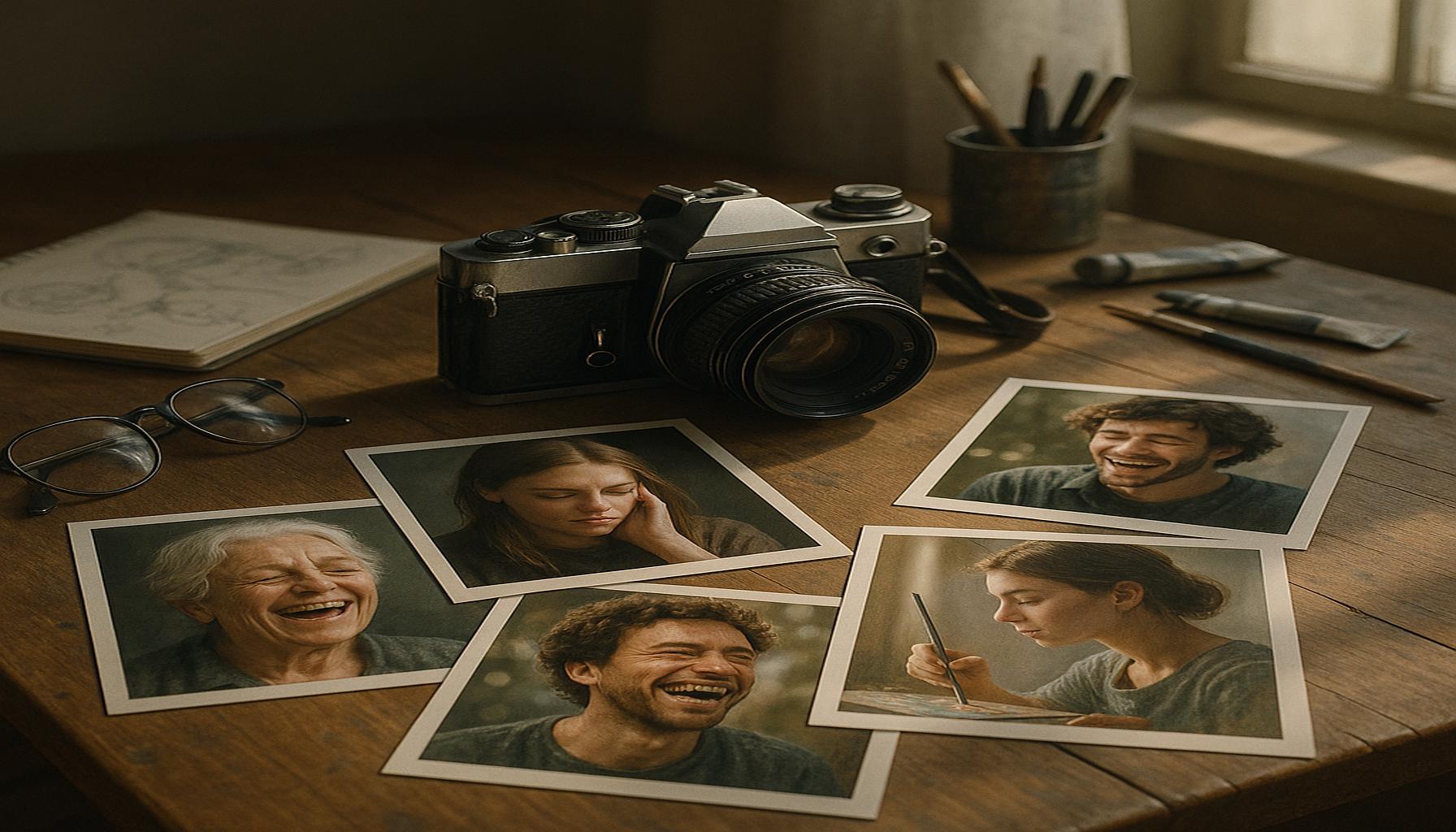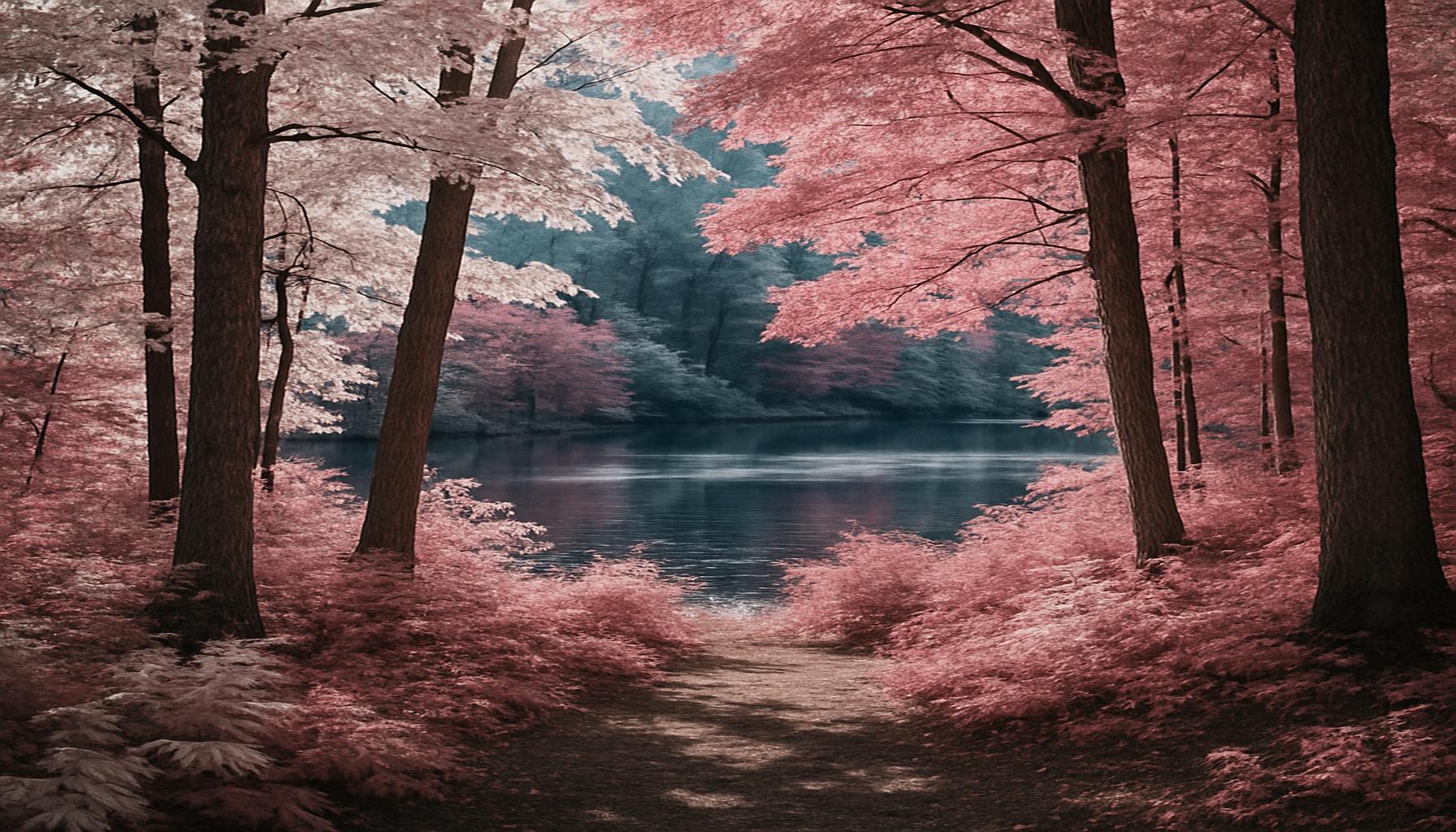Photography as Therapy: The Power of Image in Emotional and Creative Expression

The Therapeutic Power of Photography
In a world bombarded by a constant stream of images, photography serves as a powerful medium for emotional expression and personal healing. This art form transcends simple visual depiction; it acts as a therapeutic outlet for individuals seeking to navigate their emotions and share untold stories. In the United States, photography has notably emerged as a transformative tool for diverse groups, from veterans coping with PTSD to individuals grappling with anxiety.
This form of expression offers myriad avenues for self-exploration and human connection. By capturing images, one not only chronicles experiences but also engages in profound self-discovery. Consider the simple act of photographing a sunrise, which can evoke feelings of hope and renewal. Through the lens, the mundane can be transformed into the extraordinary, enabling individuals to appreciate their surroundings in new ways and confront their innermost thoughts.
- Self-Discovery: The act of capturing images can lead to profound realizations about one’s feelings and experiences. For example, a photographer may focus on nature during tough times, revealing a subconscious desire for peace, healing, or solitude.
- Emotional Release: Photography allows individuals to convey emotions that might be difficult to put into words. For instance, a photo of a loved one’s empty chair at the dining table can symbolize grief, providing a visual narrative that speaks volumes where words might fail.
- Community Building: Sharing photography can foster connections and support among those with similar struggles. Online platforms and local exhibitions serve as spaces where individuals can come together, share their stories, and find solace in collective experiences.
Numerous studies indicate that creative processes, like photography, can significantly reduce stress and enhance well-being. An article published in the Journal of Positive Psychology found that participants who engaged in creative activities reported higher levels of happiness and lower levels of anxiety. Workshops and therapy sessions increasingly incorporate photography as a component of mental health treatment, illuminating the healing potential embedded in each snapshot. For example, art therapy sessions often encourage participants to take photographs that represent their emotional landscapes, thereby fostering a sense of ownership over their healing process.
Moreover, various nonprofits and community initiatives across the United States are harnessing the power of photography to aid vulnerable populations. Programs designed specifically for at-risk youth encourage them to express their identities through visual storytelling, thereby empowering them and nurturing their resilience. Consequently, photography emerges not merely as an art form but as a vital pathway toward emotional enlightenment and resilience.
As individuals pick up their cameras and start to explore their worlds, they may find that each click is not just a moment captured, but also a step towards healing. Photography, with its innate ability to connect us with feelings, places, and one another, continues to reveal itself as a profound tool for emotional understanding and personal growth.

Dive deeper: Click here to unlock the secrets of storytelling
Exploring the Connection Between Photography and Mental Health
The relationship between photography and mental health is gaining recognition as a valid therapeutic approach. As individuals turn to their cameras to capture the world around them, they find a unique avenue for emotion-driven engagement that can significantly impact their overall well-being. Photography encourages self-reflection and introspection, guiding users through a landscape of their own thoughts and feelings. This photographic journey can lead to insights that pave the way for healing, resilience, and personal growth.
Numerous psychological theories support the notion that the creative process plays a significant role in mental health recovery. A central tenet of art therapy posits that artistic expression can manifest inner struggles and emotions in tangible forms. Photography, in particular, allows individuals to frame their experiences and emotions through their unique perspectives. Subjects may range from the sorrowful beauty of abandoned places to joyous family gatherings — each photo embodying layers of interpretation and sentiment.
Taking photographs fosters emotional engagement by prompting individuals to focus on their surroundings and emotions. When a subject or scene resonates deeply, it enhances not only the photographic experience but also the emotional catharsis that accompanies it. For example, capturing the fleeting beauty of a flower in bloom can evoke a sense of appreciation, while a photograph of an empty playground may stir feelings of nostalgia or loss. Below are some key aspects of how photography functions as a therapeutic practice:
- Mindfulness: Photography encourages individuals to remain present and observant. Focusing on the details of a scene invites a meditative state that can reduce anxiety, allowing for moments of peace amidst chaos.
- Storytelling: Every photograph tells a story, revealing layers of meaning that promote reflection and understanding. This narrative quality enables individuals to explore their life experiences, transforming them into compelling visual tales.
- Empowerment: Taking charge of the creative process—selecting subjects, angles, and moments—instills a sense of agency and control. It provides a reminder that individuals have the power to shape their realities, both through photography and in their lives.
Empirical studies have also highlighted the psychological benefits of engaging in creative practices. According to the American Art Therapy Association, participation in art activities, including photography, has shown promising results in reducing symptoms of anxiety and depression. Therapeutic photography programs are being integrated into mental health treatment plans, revealing that the act of visual creation fosters not only self-expression but also enhanced coping mechanisms in the face of adversity.
As more healthcare practitioners recognize photography’s therapeutic potential, families, communities, and individuals alike are beginning to explore this medium as a tool for emotional healing. Each photograph clicked serves as a moment of introspection, a narrative of resilience, and an invitation to engage with one’s own emotional landscapes, making photography a crucial ally in the journey of mental well-being.
Exploring the Therapeutic Aspects of Photography
Photography, often regarded merely as an art form, has profound implications for emotional and mental health. It serves as a powerful medium for self-expression and healing, allowing individuals to process their experiences and emotions through visual narrative. The act of capturing moments not only fosters a deeper connection with oneself but also promotes mindfulness. Engaging with photography encourages individuals to be present, focusing on the world around them. This intentional act can significantly alleviate feelings of anxiety and depression, as individuals channel their emotions into their imagery. Whether one is photographing landscapes, portraits, or everyday objects, each shot is an opportunity to reflect and reinterpret personal experiences. Moreover, photography as therapy often extends beyond individual practice. Group photography sessions provide a communal space for sharing, connection, and learning. Participants open up about their stories, finding solidarity in shared feelings, which enhances emotional resilience. This collaborative approach transcends traditional therapeutic methods, incorporating creativity into the healing process.As individuals explore their artistic boundaries, they uncover new perspectives, often leading to self-discovery and personal growth. The journey of capturing images can illuminate hidden truths and foster a sense of accomplishment, empowering individuals to reclaim their narratives. In this age of digital technology, leveraging platforms to showcase photographic work not only validates one’s own experiences but can inspire others, creating a ripple effect of healing.Incorporating photography into therapeutic practices emphasizes the importance of creative expression in emotional health, urging readers to consider how visual art can transform perceptions and promote mental well-being. Discovering these avenues offers new pathways in personal development, inviting everyone to explore the boundless potential of the photographic lens.
| Benefits of Photography Therapy | Creative Expression |
|---|---|
| Enhanced emotional expression | Allows individuals to convey feelings visually |
| Reduction in anxiety | Photography encourages mindfulness and presence |
The therapeutic impact of photography encourages us to reconsider its role in healing, opening doors to new methods of emotional exploration and connection.
DIVE DEEPER: Click here to discover the benefits of therapeutic knitting
The Therapeutic Benefits of Photography in Practice
The application of photography as therapy is gaining traction through various innovative programs that emphasize its healing properties. Hospitals, community centers, and therapy practices across the United States are beginning to implement dedicated photographic workshops, enabling individuals to harness their creative capabilities for emotional healing. These initiatives are particularly beneficial for populations grappling with trauma, depression, and chronic illness.
One prominent example is the work done by organizations like Now I Lay Me Down to Sleep, which provides bereaved families with professional photography services to capture precious moments with their newborns. This organization illustrates how the act of photography can serve not only as a form of remembrance but also as a powerful outlet for grief expression. The images created during these moments become familial legacies, allowing parents to connect with their emotions and honor lost lives through art.
Similarly, community art projects, such as the PhotoVoice initiative, empower marginalized voices to tell their stories through photography. By giving participants disposable cameras, PhotoVoice invites individuals to document their environments, highlighting both struggles and triumphs. This approach transforms ordinary experiences into profound narratives, creating bridges between personal stories and broader social issues. The results often reveal that photography can catalyze collective healing and community awareness, offering catharsis beyond individual expression.
For individuals coping with anxiety disorders or PTSD, therapeutic photography can stimulate positive coping strategies. Research suggests that engaging in goal-oriented creative activities, such as planning a photo shoot, can enhance motivation and provide structure in the midst of overwhelming emotions. The process of photography—selecting subjects, composing shots, and editing images—encourages individuals to focus their attention on the present rather than becoming trapped in spirals of anxious thought.
Additionally, photography promotes a sense of achievement and builds self-esteem. Achieving a desired shot, whether it be a sunset or candid family moment, fosters a sense of accomplishment that can be especially beneficial for those who struggle with self-worth. This validation can function as a vital counterbalance to negative self-talk and feelings of inadequacy.
- Social Connection: Sharing photographs on social media platforms or through local exhibitions fosters connection with others who have similar experiences. This sense of community encourages dialogue on mental health, breaking down barriers of isolation often faced by those seeking mental health support.
- Self-Discovery: As photographers engage with their form of expression, they often uncover facets of their identity. This exploration furthers their understanding of themselves, enriching their journey toward emotional healing.
- Documenting Growth: Keeping a visual journal through photography offers tangible evidence of personal development. Reflecting on past images can reveal shifts in mood, perspective, and emotional resilience over time, highlighting progress that might otherwise go unnoticed.
In today’s digital age, the accessibility of photography is higher than ever. Smartphones equipped with high-quality cameras allow individuals to express themselves through imaging that was once limited to professional photographers. This democratization of photography positions it as an increasingly relevant tool for creative expression and emotional healing, bridging gaps in mental health practices and opening doors to new narratives waiting to be told.
EXPLORE MORE: Click here for a comprehensive guide
Conclusion
In summation, photography as therapy emerges as a potent tool for emotional and creative expression, transcending traditional boundaries of mental health support. Through initiatives like Now I Lay Me Down to Sleep and PhotoVoice, individuals not only find solace in their experiences but also connect with larger narratives that fortify community bonds. The therapeutic benefits range from fostering self-esteem and allowing for self-discovery to realizing significant strides in personal growth, all while cultivating a deeper understanding of one’s identity.
The digital age has made this form of expression more accessible than ever, allowing individuals from diverse backgrounds to engage with photography as a means of catharsis. The act of capturing images not only allows for a moment of mindfulness, but it also encourages participants to confront and convey their emotions. As mental health challenges continue to rise, leveraging photography offers a promising pathway for healing that combines creativity with emotional exploration.
Ultimately, the narratives captured through the lens do not merely tell individual stories; they illuminate the shared human experience of resilience, grief, and triumph. By embracing photography as a therapeutic practice, we unlock a new realm of understanding, inviting individuals to depict their journeys in a visually compelling narrative that speaks to the heart of our collective emotional landscape. As such, those intrigued by or involved in mental health practices should consider the integration of photography into their healing repertoire, ensuring that the power of image is harnessed for both personal and communal wellness.



